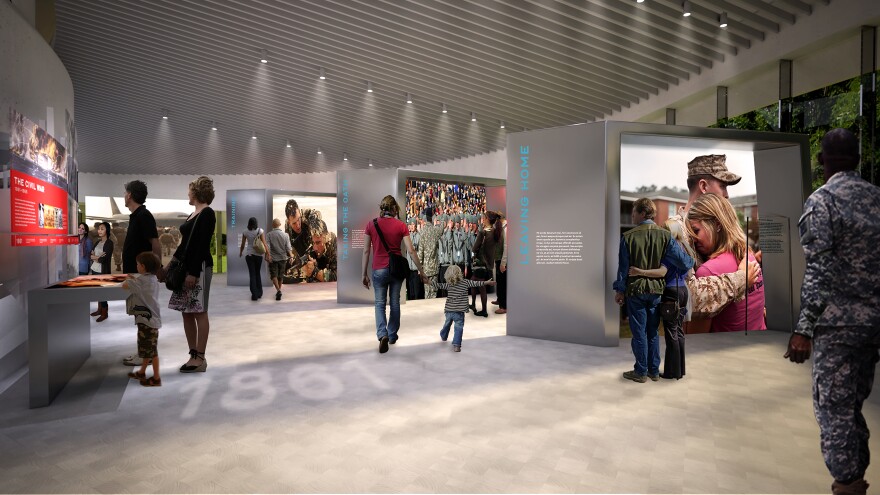The Veterans Memorial and Museum has been in development in downtown Columbus since 2015, but last week it added an adjective: It's now the National Veterans Memorial and Museum.
After a push from a bipartisan group of Ohio鈥檚 congressional representatives, President Donald Trump signed the "National Veterans Memorial and Museum Act" into law on June 21.
While doesn鈥檛 give the still-under-construction museum an economic boost, Amy Taylor, one of project's leaders, says it does grant some legitimacy.
鈥淭he national designation lends validity to say, 鈥榃e are representative of those more-than-20 million veterans alive today, the 42 million veterans that have ever existed in our country, and we鈥檙e trying to tell their story,鈥欌€� Taylor says. 鈥淎nd we鈥檙e proud that it鈥檚 here in Columbus.鈥�
Taylor is the COO of the Columbus Downtown Development Corporation, the group behind the museum. She says the project was really begun by the late John Glenn, a veteran, astronaut and longtime Senator from Ohio.
"He put together a group of veterans, every branch, every conflict since World War II to the present," she says. "He really wanted to hear what they wanted. And what they said was that they wanted a museum that had four key pillars, to honor, inspire, connect and educate."
Though Glenn , his cause was taken up in the by both Republican Rob Portman and Democrat Sherrod Brown. A in the House was sponsored by Central Ohio's Reps. Steve Stivers and Joyce Beatty and former Rep. Pat Tiberi, along with the rest of Ohio's congressional delegation.
She says that, though many other memorials, monuments and museums around the country commemorate historical wars and conflicts, the new museum in Columbus will focus on "the individual."

鈥淲e talked to 25 veterans and their family members about what it was like to serve, what it was like to take the oath, what it was like leaving home and then coming back,鈥� Taylor says. 鈥淎nd, as you can imagine, their individual experience may widely vary, but it will feel familiar.鈥�
Less than of the American population is currently serving in the military - the lowest of any point in American history. Taylor says that means it's the right time for the National Veterans Memorial and Museum.
"So many of these stories from veterans, whether it's the gentleman who served in Pearl Harbor all those years ago, or whether it's the story of someone who serves recently or even presently鈥攖hey might feel historical in context, but they鈥檙e relevant now," Taylor says.
The space will feature classic museum staples, like a timeline of American military service, more than a dozen alcoves centered around themes like military jobs, combat, and returning home, and more personal touches, like letters home written by service members.

鈥淲hen you read a letter from a Revolutionary War mother to a soldier who left, and an Iraq War mother to her soldier who left鈥攄ifferent language, we鈥檝e all advanced in the language, but the emotion that it evokes is the same," she says.
Taylor鈥檚 connection to the museum鈥檚 subject matter is personal. Her father served in the Navy in the 1960s.
鈥淲e鈥檝e had more conversations since I鈥檝e been working on this project than we ever had prior to that,鈥� Taylor says. 鈥淪o I know personally so it can be that tipping point to starting the conversation.鈥�
Visitors will have that chance in just a few short months, when the memorial and museum opens before Veterans Day this November.








